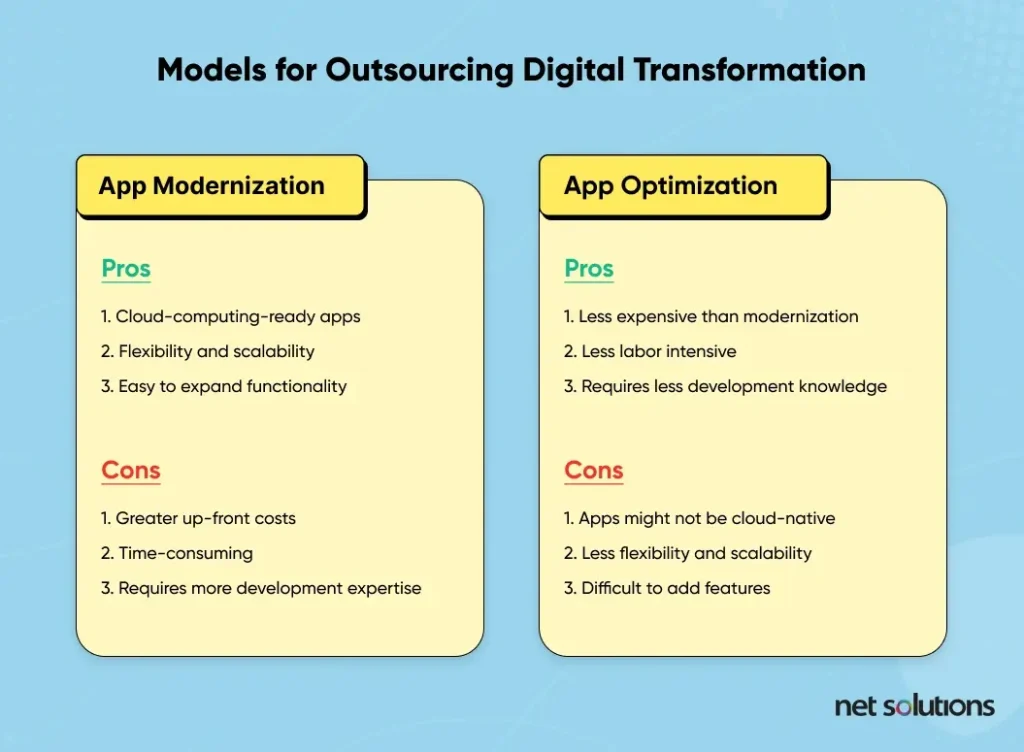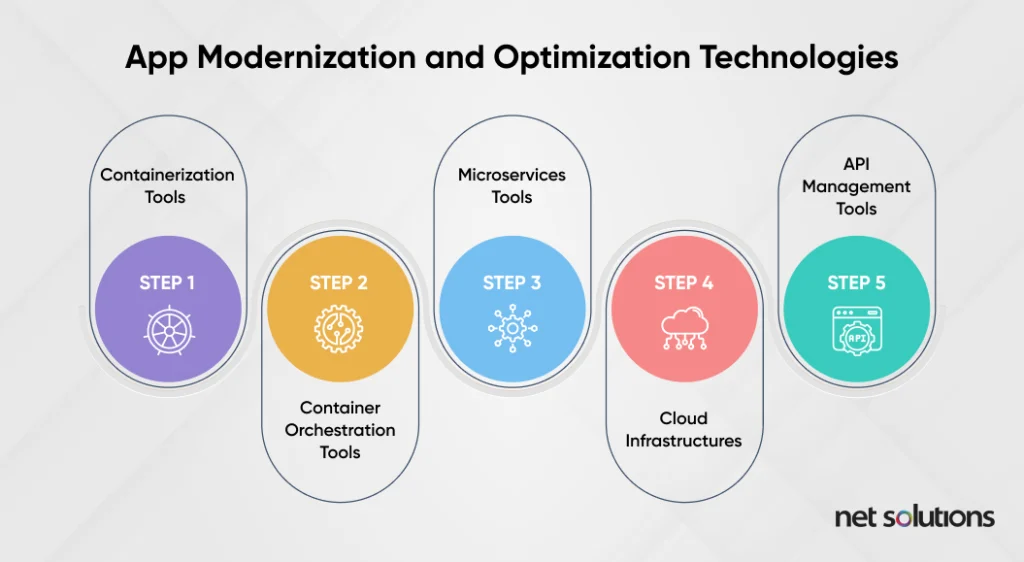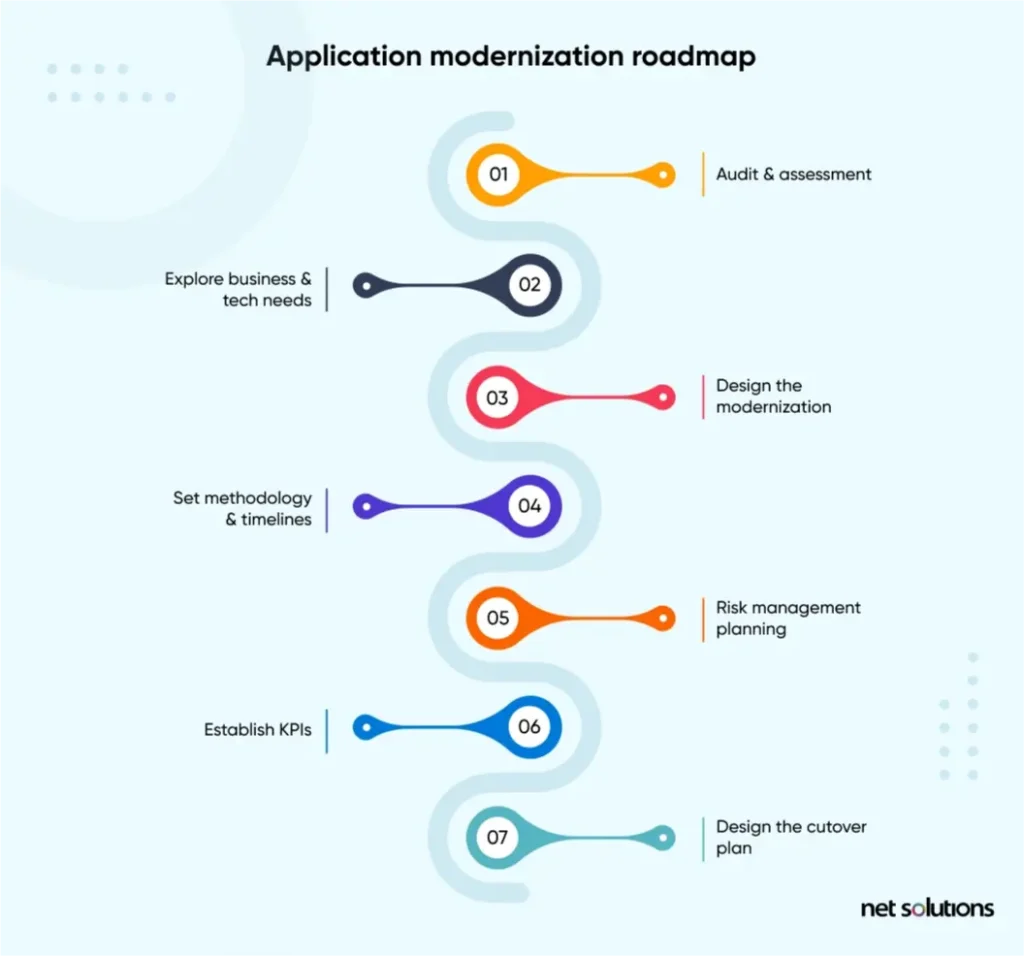Technology drives success across many sectors in today’s competitive world, and companies that refuse to embrace the power of digital transformation may struggle to compete against those that do.
In the context of digital transformation, however, you’ll hear many technical terms that describe different approaches, and it’s important to distinguish between them when plotting your transformation initiatives.
Two terms that people commonly confuse are digital application modernization and application optimization. While many initiatives incorporate both approaches, they mean different things, and each has its advantages and disadvantages.
We’ll explore the pros and cons of both, so you can create an informed roadmap to guide your digital optimization efforts.
What Is the Difference Between Application Modernization and Application Optimization?
Application optimization refers to modifying technology or an app’s current architecture to improve its performance, expand functionality, and adapt to new requirements.
Application modernization is a more comprehensive approach to moving legacy applications to a cloud-based infrastructure, often modifying them or completely rewriting their underlying code to make them cloud-native—with microservices architecture and a serverless model.
Which is better: Modernization or optimization?
Digital transformation efforts often include a fair bit of optimization and modernization, so it’s not an either/or question.
After performing a thorough assessment of your current systems and your anticipated cost-benefit analysis, you may find that modernizing applications makes sense for one subset of software systems, while others require only optimization.
When deciding between app optimization and app modernization for any given app, consider the following pros and cons of each approach.
App Modernization Pros:
- Allows apps to function in a cloud environment
- Maximizes flexibility and scalability thanks to the microservices, headless architecture, and other features
- Easy to expand a modern app’s functionality
App Modernization Cons:
- Typically more expensive (in the short-term) than optimization efforts
- Refactoring (rewriting the underlying code) is more time-consuming
- Requires comprehensive expertise in software development, above and beyond optimization efforts
App Optimization Pros:
- Often less expensive than app modernization
- Quicker and less labor-intensive than app modernization
- Enables apps to perform better, without the expertise required for an extensive code rewrite or complex migration
App Optimization Cons:
- Non-cloud-native apps will never reap the full rewards that come with cloud computing
- Falls short of the power, flexibility, scalability, and other benefits associated with app modernization
- More difficult to add features compared to cloud-native, fully optimized apps
Keep in mind that digital optimization efforts often take place in phases, and this might involve optimizing certain existing applications in the short term while modernizing the most essential ones. You can always modernize those apps you merely optimized down the line, when it fits your budget and your business needs.

How to Decide Whether to Modernize or Optimize
Choosing between application modernization and application optimization requires a thorough assessment of your current systems and infrastructure, weighed against your business requirements and your current capabilities.
Reminder: App modernization vs. app optimization isn’t always an either/or proposition, and it often involves a combined effort that employs both.
When building your strategy and deciding between the two approaches for any given application, explore the following questions.
What is the current state of your IT infrastructure and your set of applications?
Do you already have a cloud infrastructure or hybrid cloud in place, or are you still using a server? Are some of your applications cloud-native, or are they all using monolithic architecture?
How would modernization provide business value to your organization and impact the customer experience?
Fully modernized apps provide many advantages, such as greater scalability, reduced data siloes, and the power to add new functionality and features with ease. However, you should ensure any app modernization efforts will provide a meaningful return over optimization before going through the effort of modernizing.
Are your legacy apps introducing major limitations and/or security vulnerabilities that only modernization can address?
Legacy apps are usually not optimized for security and for interacting with modern systems. If optimization won’t fix these problems, then modernization is typically the best choice.
What is your budget and how will optimization vs. modernization impact it?
Conduct a thorough cost-benefit analysis and incorporate it into your business case. Be sure to weigh priorities in light of your overall business goals.
What are your current IT resources in terms of staff availability and expertise?
Can your staff handle optimization or modernization without any outside guidance and support? Do they have the know-how and the time to handle the workload without sacrificing their regular job duties?
If your IT staff does not have experience with app modernization or optimization, you can always outsource those efforts to a qualified partner—likely at a fraction of the cost of hiring additional full-time employees.
Key Technologies in App Modernization and Optimization
A whole ecosystem of modern technologies has sprung up in recent years to support app modernization and optimization efforts. What follows is a brief overview of some of those tools, with examples of popular ones.
Containerization tools: Containerization tools, such as Docker, allow teams to more efficiently deploy containerized applications (and to do so consistently across all their systems) when modernizing.
Container orchestration tools: Services like Amazon Kubernetes Services (EKS) help orchestrate containerized services and apps across a company’s networks and systems.
Microservices tools: Microservices tools like Amazon SQS help microservices communicate across a cloud-based system while maintaining top-notch security.
Cloud infrastructures: Modern applications are built to work on cloud-based infrastructures like Amazon Web Services (AWS), Microsoft Azure, and Google Cloud Platform (GCP).
API management tools: APIs are the core of modernization efforts, and API management tools like Apigee make implementation and testing far more efficient and painless.
This is just a brief introduction to many of the tools available to companies working to optimize or modernize their applications. When building your application modernization strategy, perform a thorough analysis of your needs and the technologies available to serve them.

App Modernization and Optimization Roadmap
Enterprise application modernization and optimization efforts require careful planning, otherwise you may have to face runaway costs, security threats, and other problems.
Here is a general roadmap to follow. Be sure to review our more in-depth guide to building an application modernization roadmap when you’re ready to start planning.

Step 1 | Audit and Assessment: Review your current tech stack, applications, infrastructure, and limitations. Determine which applications may be in need of optimization or automation, and which modernization solutions can help you achieve your goals (e.g., rehosting, replatforming, rearchitecting, refactoring).
Step 2 | Explore Business and Tech Needs: What are your most pressing business needs, and how do current monolithic applications and legacy systems fall short of achieving those? Pay close attention to critical applications and how your optimization or modernization project can improve business processes and better serve end users.
Step 3 | Design the Modernization: Plan out your modernization approach, and select a modernization process that is both cost-effective and supports your company’s long-term goals.
Step 4 | Set Methodology & Timeline: Given your approach to modernization, set a realistic timeline for each phase of your optimization or modernization project. Factor in time for application development, cloud migration, testing, and other key steps.
Step 5 | Risk Management Planning: Upgrading always comes with risks, and any major IT change can run the risk of introducing security vulnerabilities, downtime, data loss, and other problems that could severely impact your business. Risk management begins with identifying threats and building contingencies.
Step 6 | Establishing KPIs: Identify Key Performance Indicators (KPIs) to objectively measure and assess your success along the way. Take an honest look at the metrics as you go, and adjust your plan accordingly.
Step 7 | Design the Cutover Plan: When migrating to a cloud infrastructure, it’s important to have a clear cutover plan that introduces minimal disruptions to the user experience.
Following a solid, intelligently planned roadmap will help you avoid catastrophic mistakes, support cost optimization, and help you deliver newly optimized systems in a reasonable timeframe.
Looking for an App Modernization Partner?
When it comes to application modernization and optimization, oftentimes in-house teams don’t have the time or the experience to ensure success—after all, app modernization isn’t something the typical IT professional does on a regular basis.
That’s why it can be helpful to turn to an outsourcing partner that offers application modernization services, like Net Solutions.
We have helped many companies optimize and modernize their apps to support full-scale digital optimization efforts. We’ve worked with well-known enterprises like Euro Car Parts and IMG, and we can take your IT systems to the next level.
SHARE THIS POST
Table of Contents
Related Services
Related Resources
- A Framework-based Approach for App Assessment
- App Modernization Benefits To Boost Your ROI and Future-Proof Your Business
- 11 Top Application Modernization Best Practices in 2025
- Building a Winning Application Modernization Business Case
- Legacy Application Modernization Case Studies & Success Stories
- Solving the Toughest Application Modernization Challenges
- Cloud-Native Application Modernization: Benefits & Strategies
- 8 Core Application Modernization Drivers
- Enterprise Application Modernization: Complete Guide [2025]
- Lift and Shift: The Modernization Formula for Legacy Apps
- Navigating Application Migration and Modernization [Guide]
- A Practical Approach to Application Rationalization: A CIO's Guide to Managing Complexity and Reducing Costs
- What is Replatforming? A Beginner's Guide to Upgrading Your Technology Stack
- 7 Steps to Build an Effective Application Modernization Roadmap
- Application Modernization Services Market: Comprehensive Analysis
- A Step by Step Guide to Application Modernization Strategy
- Explore the Best Application Modernization Tools and Resources
- 13 App Modernization Trends That Can Support and Optimize Your App Modernization Strategy


